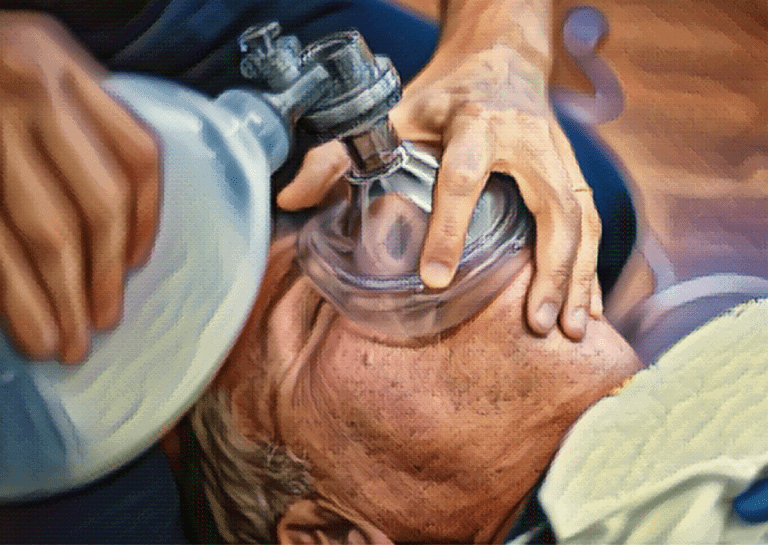Resuscitation is a means of stabilizing a patient who is suffering physiological dysfunction, for example, when they stop breathing or their heart stops functioning correctly. There are different types of resuscitation intended to correct different physiological disorders.
Conditions that necessitate resuscitation include cardiac arrest, lack of consciousness, septic shock, respiratory distress and failure, severe burns, and several others.
This article discusses situations when resuscitation should be performed on children, as well as the specific types of resuscitation.
Table of contents
What is resuscitation?
Resuscitation is performed to revive or stabilize someone who is unconscious or lifeless. It is used to correct physiological disorders ranging from heart failure and cardiac arrhythmia to respiratory distress, septic shock, and pulselessness.
It can be an emergency measure used to stabilize a patient suffering cardiac arrest before they can receive extensive medical treatment, or it can be used as part of the treatment process for major burns and septic shock.
Types of resuscitation
There are different types of resuscitation used in different emergency situations.
Cardiopulmonary Resuscitation
Cardiopulmonary Resuscitation (CPR) is a type of resuscitation performed when someone has suffered cardiac arrhythmia (irregular heart rhythm) or cardiac arrest (electrical malfunction which causes the heart to stop beating properly). CPR consists of chest compressions and emergency ventilation with the goal of restoring normal heart function before the patient can receive further medical treatment.
Fluid resuscitation
Fluid resuscitation is used to treat hypovolemia (abnormally low blood volume) in children suffering septic shock or major burns. In the case of septic shock, rapid fluid resuscitation is needed to restore tissue function and mental status and to improve the quality of pulses. For children who have suffered major burns, fluid resuscitation is an essential part of management and treatment. It helps to maintain circulatory volume and restore tissue function.
Neonatal resuscitation
Neonatal resuscitation is performed on newborn babies in the delivery room. Although most babies are delivered successfully without the need for emergency intervention, approximately 10 percent will require resuscitation with 1 percent of those warranting extensive resuscitative measures. The procedures involved in neonatal resuscitation can include positive pressure ventilation and chest compressions, endotracheal intubation, and administration of medicines.
When to perform resuscitation
Different methods of resuscitation are required under specific circumstances. The state of the child as well as the cause of their physiological disorder are considered when initiating resuscitation.
CPR
CPR should be performed when a child is unconscious, unresponsive, and/or pulseless. When it comes to cardiac arrest, early intervention and resuscitation are crucial to the patient’s survival. If a child is found unresponsive after an unwitnessed collapse, the rescuer should initiate CPR immediately.
Fluid resuscitation
For an infant or child suffering septic shock, rapid fluid resuscitation should be initiated as soon as possible to restore tissue function and stabilize blood pressure. Fluid resuscitation should be used within 15 minutes of a confirmed septic shock diagnosis. For children who have suffered major burns, fluid therapy should be administered promptly to mitigate tissue damage and stabilize vital functions. Fluid therapy for major burn injuries usually lasts 24 hours.
Neonatal resuscitation
A newborn baby’s condition is rapidly assessed immediately after birth. If the baby is full-term with good muscle tone and is breathing/crying, then resuscitation is not required. If a baby is unstable after birth, then resuscitation in the form of stabilization, ventilation, oxygenation, chest compressions, and/or administration of epinephrine may be required.
References
- Atkins DL, Berger S, Duff JP, Gonzales JC, Hunt EA, Joyner BL, Meaney PA, Niles DE, Samson RA, Schexnayder SM. Part 11: Pediatric Basic Life Support and Cardiopulmonary Resuscitation Quality: 2015 American Heart Association Guidelines Update for Cardiopulmonary Resuscitation and Emergency Cardiovascular Care. Circulation. 2015 Nov 3;132(18 Suppl 2):S519-25. doi: 10.1161/CIR.0000000000000265. PMID: 26472999.
- Workman JK, Ames SG, Reeder RW, et al. Treatment of Pediatric Septic Shock With the Surviving Sepsis Campaign Guidelines and PICU Patient Outcomes. Pediatr Crit Care Med 2016; 17:e451.
- Barrow RE, Jeschke MG, Herndon DN. Early fluid resuscitation improves outcomes in severely burned children. Resuscitation. 2000 Jul;45(2):91-6. doi: 10.1016/s0300-9572(00)00175-1. PMID: 10950316.
- Madar J, Roehr CC, Ainsworth S, Ersdal H, Morley C, Rüdiger M, Skåre C, Szczapa T, Te Pas A, Trevisanuto D, Urlesberger B, Wilkinson D, Wyllie JP. European Resuscitation Council Guidelines 2021: Newborn resuscitation and support of transition of infants at birth. Resuscitation. 2021 Apr;161:291-326. doi: 10.1016/j.resuscitation.2021.02.014. Epub 2021 Mar 24. PMID: 33773829.
- Aziz K, Lee CHC, Escobedo MB, Hoover AV, Kamath-Rayne BD, Kapadia VS, Magid DJ, Niermeyer S, Schmölzer GM, Szyld E, Weiner GM, Wyckoff MH, Yamada NK, Zaichkin J. Part 5: Neonatal Resuscitation 2020 American Heart Association Guidelines for Cardiopulmonary Resuscitation and Emergency Cardiovascular Care. Pediatrics. 2021 Jan;147(Suppl 1):e2020038505E. doi: 10.1542/peds.2020-038505E. Epub 2020 Oct 21. PMID: 33087555.
- Graves TA, Cioffi WG, McManus WF, Mason AD Jr, Pruitt BA Jr. Fluid resuscitation of infants and children with massive thermal injury. J Trauma. 1988 Dec;28(12):1656-9. doi: 10.1097/00005373-198812000-00007. PMID: 3199467.
